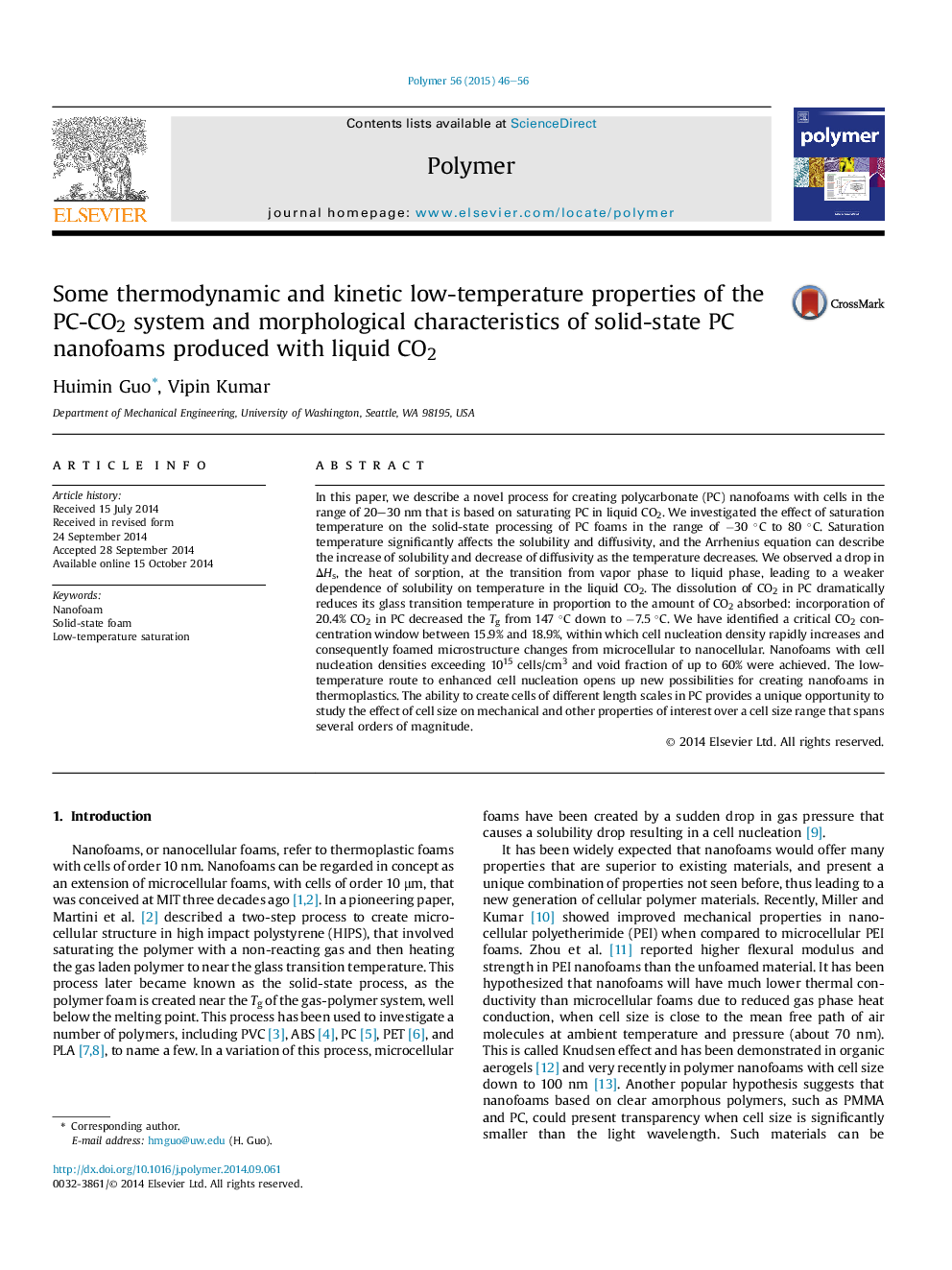| Article ID | Journal | Published Year | Pages | File Type |
|---|---|---|---|---|
| 5180580 | Polymer | 2015 | 11 Pages |
•A process to create nanofoams in polycarbonate with cells in 20–30 nm range is described.•Cell nucleation densities exceeding 1015 cells/cm3 were achieved.•A novel aspect of the process is using a low-temperature (−30 °C) to achieve the high CO2 concentration needed for nano-nucleation.•Solubilities and diffusivities for the PC-CO2 system at sub-zero temperatures are reported.
In this paper, we describe a novel process for creating polycarbonate (PC) nanofoams with cells in the range of 20–30 nm that is based on saturating PC in liquid CO2. We investigated the effect of saturation temperature on the solid-state processing of PC foams in the range of −30 °C to 80 °C. Saturation temperature significantly affects the solubility and diffusivity, and the Arrhenius equation can describe the increase of solubility and decrease of diffusivity as the temperature decreases. We observed a drop in ΔHs, the heat of sorption, at the transition from vapor phase to liquid phase, leading to a weaker dependence of solubility on temperature in the liquid CO2. The dissolution of CO2 in PC dramatically reduces its glass transition temperature in proportion to the amount of CO2 absorbed: incorporation of 20.4% CO2 in PC decreased the Tg from 147 °C down to −7.5 °C. We have identified a critical CO2 concentration window between 15.9% and 18.9%, within which cell nucleation density rapidly increases and consequently foamed microstructure changes from microcellular to nanocellular. Nanofoams with cell nucleation densities exceeding 1015 cells/cm3 and void fraction of up to 60% were achieved. The low-temperature route to enhanced cell nucleation opens up new possibilities for creating nanofoams in thermoplastics. The ability to create cells of different length scales in PC provides a unique opportunity to study the effect of cell size on mechanical and other properties of interest over a cell size range that spans several orders of magnitude.
Graphical abstractFigure optionsDownload full-size imageDownload as PowerPoint slide
